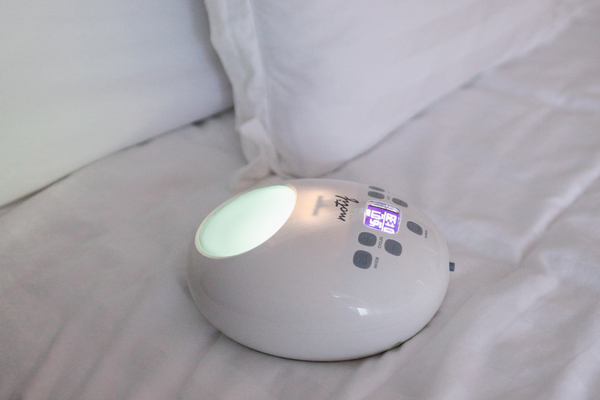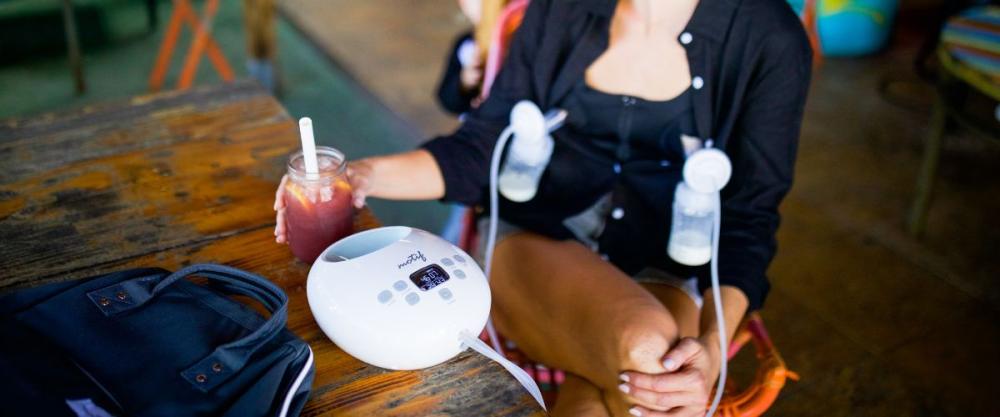Breastfeeding as Birth Control
Is breastfeeding a form of birth control? In short, the answer is “Yes,” but there are limitations to both the efficacy, reliability, and duration. Since lactation is heavily fueled by certain elevated hormones, this birth control method is the body’s natural way of spacing out potential pregnancies.
Let’s look at how this works, along with other types of birth control for nursing mothers, and how to protect your milk supply.
Lactational Amenorrhea Method
Lactational Amenorrhea Method (LAM) is the official term for the body using lactation and breastfeeding as a method of birth control. Under the right circumstances and very specific rules, this method is as effective as “the pill” (98%) for hormonal contraceptives, if not more so initially, but only for a duration of time. To be optimally effective and reliable, the mother must be:
- Exclusively breastfeeding. This means no supplementation at any point or pumping in place of any feedings.
- No more than four months postpartum. In other words, this is reliably effective for only the first four months.
- Amenorrhea; Without the return of menstruation. Beyond the initial bleeding that naturally occurs during postpartum delivery, the return of the menstrual cycle ends the efficacy of LAM.
Naturally, amenorrhea is typically prolonged with exclusive breastfeeding, delaying the return, but some variances occur from case to case. Many reports do not have their period return for an entire year! This also means this method may be effective for longer than 4-6 months but should not be treated as reliable past four months.
Hormonally-driven functions are delicate and precise. Many variables, such as diet, stressors, genetics, and stimuli, can influence them. Just as pumping milk can be vastly different from feeding directly from the breast, the body responds similarly when determining if it needs to ready itself in the case of another pregnancy. Prolactin, progesterone and estrogen take turns being in flux depending on the signals and stimuli (or lack thereof) the body receives. So if the body is sometimes not as stimulated to produce milk when relying on a pump compared to skin-to-skin feeding, it may be paralleled with the return of menses sooner.
With that in mind, manufactured birth control options, specifically hormonal birth control, need to be chosen mindfully.


Other Birth Control Options
It must be said that a duration of abstinence is recommended postpartum. Most healthcare providers, such as gynecologists, recommend at least six weeks. While this may seem like a no-brainer to most, as if that would be a desire, your postpartum hormones may say otherwise. Stay strong. Beyond abstinence and relying on breastfeeding hormones, your other options are:
- Barrier Method
- Family Planning
- Hormonal Birth Control
Barrier Method
Condoms, diaphragms, and caps. Condoms serve as a physical block and spermicide. Therefore, using one is recommended, even if other measures are in place if contraception is not an option.
Family Planning
Essentially, this is “fertility awareness” to know when conceptetion is most likely to happen and when to avoid relations if that’s not a desired outcome.
- You have to keep a daily record of your fertility signals, such as your temperature and the fluids coming from your cervix – it takes 3 to 6 menstrual (monthly) cycles to learn the method.
While this can be a reliable form of contraception, it relies on the predictability of your cycle. If your menstrual cycle is not so, it will be a less effective way to predict fertility peaks. It’s also affected by illness, stress, etc.
However, whether or not you plan to rely on this method, it provides an excellent screening tool for women’s health. The cervix produces secretions to balance the pH required to avoid infections and keep fertilized eggs viable and clean. Watching the changes in consistency and color can tell you about your fertility and if there is something “off.”
Hormonal Birth Control
A standard method of contraception uses hormones, which can come in different vehicles:
- Birth control pills, mini pill: These may contain estrogen and progestin or progestin-only pills.
- Implants: These are small rods implanted beneath the skin. They release a continuous dose of hormones to prevent ovulation. ex Nexplanon
- Progestin injections are given to the upper arm or buttocks muscles every three months.
- The skin patch is placed on your shoulder or the body. It releases a continuous dose of hormones.
- The vaginal ring is flexible, about 2 inches wide. It is placed into the vagina and releases the hormones progestin and estrogen.
- Emergency (or "morning after") contraception: This medicine can be bought without a prescription at your drugstore.
A word of caution to this variety. Hormones can actively interfere with others. This means that milk supply may take a hit if given too soon before milk supply has developed or established or if the type or dosing is contraindicated for breastfeeding/pumping mothers. Side effects can include postpartum depression, low milk supply, and more, so discussing what method is right for you is important.
An alternative: Intrauterine Device (IUD) The IUD is a small plastic or copper device placed inside the woman's uterus by her provider. Some IUDs release small amounts of progestin. Depending on the device used, IUDs may be left in place for 3 to 10 years. Because it is a low or no amount of hormone used, depending if copper or progestin, this is dubbed the safest to use while breastfeeding out of the hormone contraceptives.
Permanent Infertility
Tubal Ligations
While there isn't substantial evidence to suggest a significant impact on milk supply with just the ligations, the main thing to consider is potential time away from the baby for the procedure and planning accordingly. If the procedure is done outside the delivery process, such as during a c-section, having pumped breast milk until the anesthesia has worn off is a great plan.


Information provided in blogs should not be used as a substitute for medical care or consultation.







